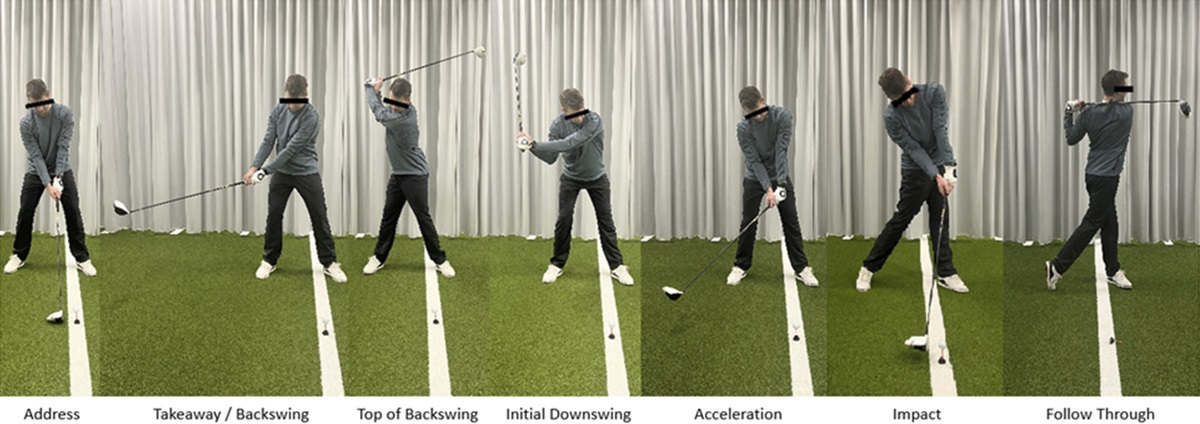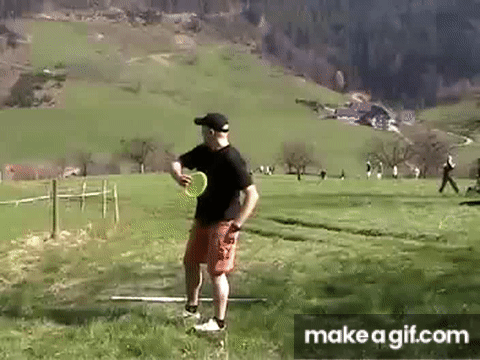I consider myself "Mr. APT" since I'm prominently featured at the top left of page 47 (though I am better now!). I have a lot of thoughts on the issue.
1) I think the inclusion of Anthony Barela kind of weakens the argument. We are talking about arguably the furthest thrower on the planet, and he throws with spine extension/APT. Here is touring pro and **1021** rated golfer Austin turner throwing (shirtless) with clear spine extension/APT;
2) Perhaps the biggest point. I have brought this up before. Spine extension/APT is a chicken/egg problem:
A) is APT caused by a lack of core strength/mobility/physical limitation or
B) is APT caused by a flawed "internal model" of the throw?
If you ask me **today** I would say it's 80%B and 20%B. Indeed the better shape you are in the less this exists, but both AB and Austin Turner are in great shape and elite disc golfers (and by some coincidence both from Arizona) but exhibit APT and spine extension. I would put good money that even if you were an Olympic gymnast, you could still throw in spine extension/APT given your "internal model"/training/body mechanics or preferences
To me there does point to some sort of swing model that allows for high level distance *despite* spine extension/APT though it may not apply to everyone. I think there are bodies that make it work
Thanks for weighing in, and I agree your APT is reduced! Weighing in on each point here, let's see if we can find consensus. Aware that Coach Taylor or SW might also weigh in with different emphasis, which I encourage.
1. If you only define "The Good Swing" as efficiency, it only would consider high power at relatively low effort like the image on the current title page suggests (of course I don't know what AB or Turner feel, but I assume they get
plenty of power at lower effort than most amateurs). In that case, I agree that AB and Turner are potentially problematic counterpoints, aside from the somewhat scary idea that AB could find an alternate form without APT and throw
even farther. Your points and the case of AB in particular made me realize that what we should probably do in the figure on the title page is add an explicit "Safety" third dimension, and adjust some text accordingly (with appropriate caveats). I'll try to advance that argument and address some of the important related points you raise here.
See if you agree that "The Good Swing" should entail maximizing Safety and Power with minimum Effort.***

2. If you meant 80% A and 20% B, I think I'm inclined to agree. I try to keep in mind that there all kinds of different ways to be in great shape for one thing but not another. For example, I've now seen several players, especially those with heavy barbell weightlifting backgrounds, who benefit from rebuilding their exercise programs to focus on core flexibility, mobility, and dynamic strength, and a lot of one-legged or moving lifts that help them carry their posture with less APT. I am an example of this and am just barely crawling out of that trench now. But I'm not objecting to the idea that it's some mix of both, and there are open questions there.
3. I don't think there's a strong argument that says you
can't throw far with APT for the reasons you mentioned. And after all, individual bodies differ and are highly adaptable, especially if you start young. I think my only area of concern from a coaching perspective for players like AB or Turner or yourself, there are data from other contexts like golf that more spine extension/APT in the posture is associated with lower back ailments. In many other load bearing/forceful movements, more neutral spine position with less APT is usually more mechanically efficient in the few studies I can find that appear to control variables or do true interventions. But even if we put that aside and suppose AB or Turner could
not throw farther without the APT, I worry about injury risk/Safety. It also seems like those people are more likely to have knee hyperextension on power drives, but that's just via looking at lots of individual DG backhand cases now. Even if it's not leading to many acute injuries yet, my concern is how people like AB or Turner (or you with more APT) will be faring in their 40s or later if they keep throwing with those mechanics. However, applying any of those concepts or data to DG is speculative to my knowledge, other than the datapoints of people who have learned to throw far and report lower back pain or injuries.
Here's a recent review on golfer mechanisms of injuries, including to the spine with some association with spine extension (APT). Of course, we don't have great studies about how much of this applies to the DG backhand, but food for thought:
ology can assist the health care provider in recognizing and preventing musculoskeletal injuries secondary to golf. Most injuries occur in the upper limb and the lumbar spine. This review describes musculoskeletal pathologies seen in golfers with respect to anatomic area and golf swing...

journals.lww.com
Example intervention study of APT retraining on gait and hamstring injury (I noticed that both my calves and hamstrings got less injured after working on posture exercises aimed at mitigating APT myself, not sure if this generalizes):
Like pretty much every applied science there are some blind spots but there's interesting stuff out there.
***And we could add Consistency as maybe the fourth important main dimension but it's getting hard to pack it into a simple figure lol




